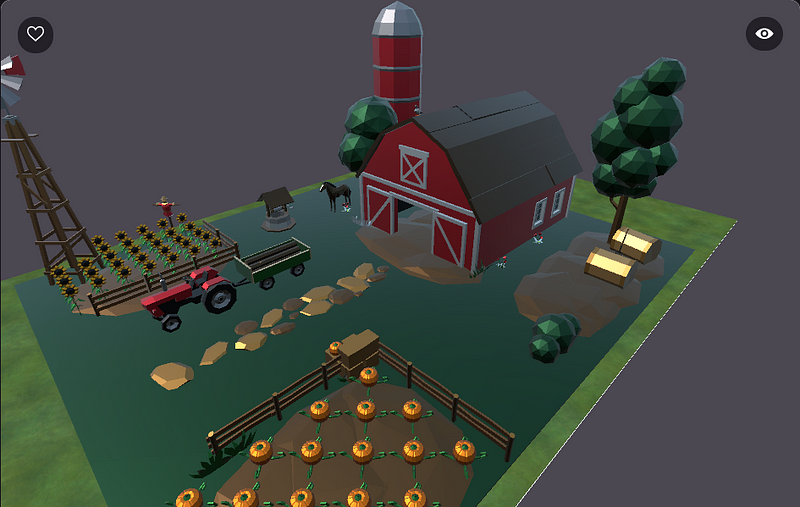A Critical Examination of the Current Metaverse Landscape
Written on
The Metaverse Landscape
This year has been tumultuous for Facebook, which has faced a staggering decline in its stock value, losing over $230 billion in a single day. This downturn marks a significant trust crisis for the company.
I sometimes refer to the company as Facebook instead of Meta, as I’m still adjusting to its rebranding. After investing $10 billion into Metaverse development in 2021, the company’s recent financial reports raise serious questions about its future. Investors and tech experts are now debating whether the shift toward the Metaverse was too hasty.
Interestingly, this downturn could actually benefit potential Metaverse users. It may serve as a necessary reality check, allowing us to better understand the current state of the Metaverse and its future potential.
The Existing Metaverse
Although discussions around the Metaverse surged following Facebook's rebranding to Meta, the most genuine Metaverse experiences available today are not related to Meta. Two of the leading virtual worlds are Decentraland and Sandbox.
What do these environments look like? They resemble video games from one or two decades ago, filled with vibrant colors, cartoonish graphics, and fantastical settings that diverge significantly from Meta’s envisioned Metaverse.

The expectation was that we would be conducting business meetings in the Metaverse; however, it appears we are more likely to find ourselves engaging in playful activities like Pokémon with colleagues. Currently, many of these Metaverses are concentrated on gaming, earning cryptocurrency, and investing in virtual property. They offer digital experiences but not necessarily immersive virtual ones, as some do not even accommodate virtual reality headsets.
Both Decentraland and Sandbox are actively working on establishing viable business frameworks. Being decentralized — built on blockchain technology — their cryptocurrencies are integral to their ecosystems. Decentraland utilizes MANA, whereas Sandbox operates on SAND. These tokens allow users to build and purchase virtual land, among other functionalities.
Let's delve deeper into the evolution of virtual real estate within the Metaverse.
The Virtual Land Bubble
A tech firm named Terrazero recently introduced the first mortgage for a plot of virtual land in Decentraland, valued at $45,000 under a two-year NFT agreement. While some may find this absurd, Terrazero is optimistic about growing demand for virtual land this year.
The company’s confidence is so high that it is launching a new marketplace called Amadea, which will function as a real estate broker for those interested in investing in virtual land.
But is virtual land truly a groundbreaking opportunity? While it may present a chance, it is certainly not a novel one.

Despite what you may hear from others, it’s essential to remember that the concept of virtual land is not fresh; it has previously faltered. Nearly two decades ago, Second Life attempted a similar model. Some argue that it failed due to poor user experience, but for a time, it seemed like virtual real estate was poised to be the next big trend.
After a period of excitement, interest waned, and people returned to their regular routines, largely forgetting about virtual land until recently. Our lives are now more digital than ever, as we navigate a mixed reality by attending meetings from home. However, the future of investing in virtual land remains uncertain. It's unclear whether purchasing virtual property will be a smart investment or another misstep.
The Path to Hyper-Realism
As illustrated in the following image, we are still far from achieving the hyper-realistic Metaverse that Meta — or should I say Facebook? — has promised.
Achieving such a level of realism will require advanced wearable technology. Glasses and bracelets could enable experiences in the Metaverse akin to those in the physical world. However, creating a hyper-realistic Metaverse demands substantial computational resources, which not every company can afford.
To this end, Meta has developed a powerful supercomputer. If the company can deliver on its promises, we might witness more lifelike virtual experiences in the coming years. But will this be sufficient? The truth is, no one knows if hyper-realism will be the winning strategy. What is certain is that the outcome of the Metaverse will be intriguing and unpredictable.
Users should have the option to select from various experiences across different virtual realms. Ideally, Meta won’t be the sole entity shaping the Metaverse’s future. In the meantime, it may be wise to allow the Metaverse some breathing room to evolve over the next few years. The current hype can indeed be overwhelming.
For those interested in more insights like this, consider subscribing to my newsletter. Additionally, you can gain unlimited access to Medium for just $5 per month by joining through my referral page to support me and other writers.